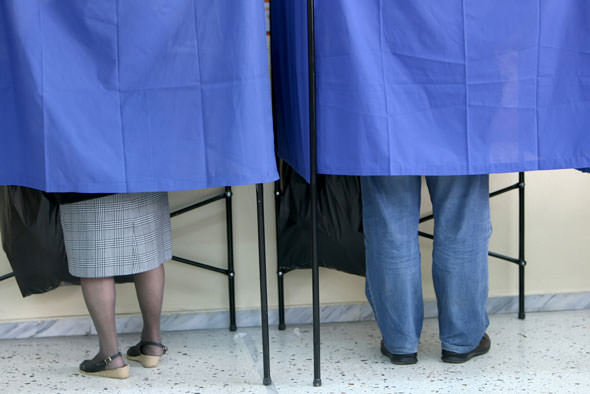COLUMBUS, Ohio—Thousands of Ohio voters were held up or stymied in their efforts to get absentee ballots for last year’s general election because of missing or mismatched signatures on their ballot applications, an Associated Press review has found.
The signature requirement on such applications is a largely overlooked and spottily tracked step in Ohio’s voting process, which has shifted increasingly to mail-in ballots since early, no-fault absentee voting was instituted in 2005.
To supporters, the requirement is a useful form of protection against voter fraud and provides an extra layer of security necessary for absentee balloting.
To detractors, it’s a recipe for disenfranchisement — a cumbersome addition to an already stringent voter identification system.
Susan Barnard, of Dayton in Montgomery County, said her 78-year-old husband, Leslie, who has cancer, missed a chance to vote last year because of a delay related to the signature requirement.
“We had planned a cruise last fall to give him something to look forward to,” said Barnard, 73. “It fell at the time of the election, and we were going to vote the absentee ballot. We got right down to the wire and we didn’t have one for him, and so he did not vote because of that.”
She said he had hoped to vote in the election, which included races for governor, state Supreme Court and Congress. Barnard suspects her husband simply forgot to sign his ballot application.
Figures provided to the AP through public information requests to Ohio’s 88 county boards of elections show 21 counties rejected more than 6,500 absentee ballot applications because a signature was either missing or didn’t match what was on file. That requirement is not for the ballot itself, which faces a different battery of requirements, but merely for an application requesting one. Another five counties reported rejecting about 850 applications combined, for various reasons that the boards didn’t specify.
The few counties that tracked what happened to applications after they were rejected said issues were largely addressed before or on Election Day.
Twelve responding counties recorded encountering no signature issues with the absentee applications. The remaining responding counties said they didn’t track how many applications they rejected.
It’s a statistic conspicuously absent from all the official data collected by the state, making it all but impossible to compare the issue across years or multiple states.
Signatures and other verification requirements are there to safeguard Ohio’s elections, said state Rep. John Becker, a southwestern Ohio Republican. He said if a voter fails to sign the application form, “that’s on them.”
“I’m a big believer in personal responsibility,” Becker said. “You’ve got the form in front of you. If you forget to sign it, there are consequences.”
But Jen Miller, executive director of the League of Women Voters of Ohio, said the AP analysis highlights a largely unexamined step in a process her organization already views as inefficient and subject to uneven enforcement.
“So a person can register to vote online, but if you go online to request an absentee ballot, a form is mailed to you that you have to mail back,” Miller said. Her organization supports allowing people to request absentee ballots online.
About 1.4 million of Ohio’s roughly 8 million registered voters cast absentee ballots last year.
Republican Secretary of State Frank LaRose advocated as a state lawmaker for Ohio to allow voters to apply for absentee ballots online. A version of legislation he first proposed in 2013 is now before Ohio’s Legislature.
“While Ohio has long been a national leader in early voting, there is certainly more that can be done to prevent issues like these from occurring,” LaRose said. “Election integrity and voter access can certainly coexist, so let’s work together to modernize the process so we can improve the antiquated system currently in place.”
LaRose’s predecessor mailed absentee ballot applications to 6.6 million of Ohio’s 8 million registered voters in 2018. And state law actually says a request for an absentee ballot “need not be in any particular form” — meaning it could conceivably arrive on a cocktail napkin or the back of an envelope.
Still, the signature requirement is one of eight or nine pieces of information, depending on the type of election, that a successful request must contain.
According to the National Conference of State Legislatures, three states — Oregon, Washington and Colorado — conduct all-mail elections, eliminating the ballot application process by automatically mailing a ballot to every registered voter before Election Day.
Miller said Ohio has not shown the political will to move in this direction, but her organization is pushing establishment of a permanent absentee list for those voters who meet certain criteria that require help, such as illness, permanent disability or illiteracy. Seven states and the District of Columbia have just such a system.
PrintJULIE CARR SMYTH The Associated Press | Radio Free (2019-12-16T17:43:48+00:00) Ohio Rejected Thousands of Absentee Ballot Applications Last Year. Retrieved from https://www.radiofree.org/2019/12/16/ohio-rejected-thousands-of-absentee-ballot-applications-last-year/
Please log in to upload a file.
There are no updates yet.
Click the Upload button above to add an update.


